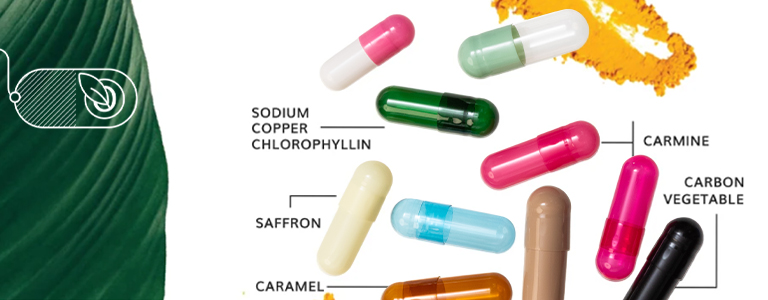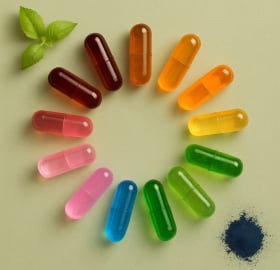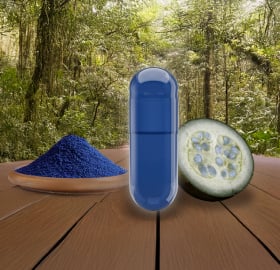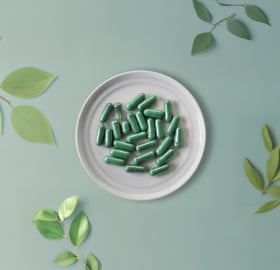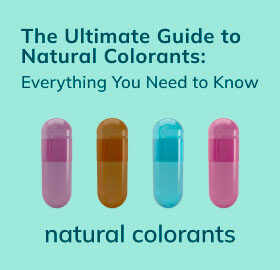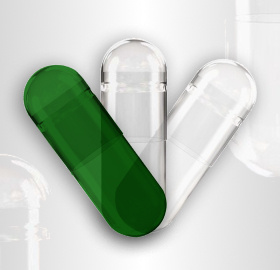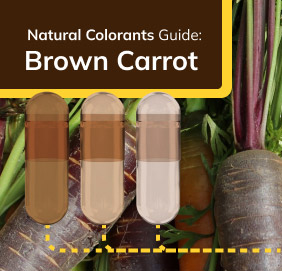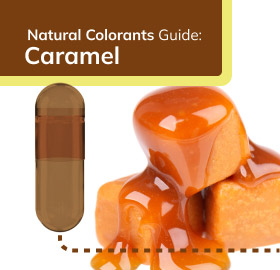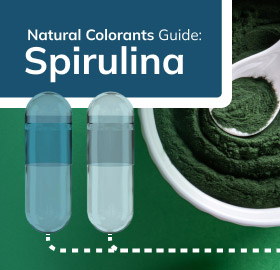All natural. Vegetarian. Gluten-free. Kosher. Halal. Non-GMO. The demands of health-conscious consumers are expanding, especially in the nutraceutical, probiotic, and dietary supplement markets. To stand out in this crowded space, brands must align with the growing desire for "natural" products. HPMC capsules made with natural colorants give manufacturers a way to differentiate their offerings while giving consumers the natural products they want.
.
Capsule colors can play a significant role in product differentiation
It’s challenging to label a product as “all natural” when its capsule contains synthetic coloring. To maintain their "natural" claims, many supplement makers opt for clear capsules, sacrificing the branding opportunities that color offers.
Natural colorants solve this dilemma, allowing manufacturers to create visually appealing, brand-distinguishing capsules without compromising their natural credentials. These pigments not only enhance product appearance but also help consumers form strong associations with the supplement's purpose—think of someone asking, "Did I take my yellow pill today?"
Beyond aesthetics, natural pigments offer additional advantages. They often carry nutritional benefits, like algae-derived beta carotene, which is rich in vitamin A. Plus, their production is eco-friendly, using biodegradable processes free from harmful chemicals. And importantly, these natural pigments are certified safe for use, aligning with the values of health-conscious consumers.

A wide range of colors are available
HPMC capsules made with natural colorants offer the same range of standard colors as those made with synthetic options. These natural colorants, derived from sources like algae and vegetables, provide manufacturers with a variety of color choices.
For instance, the chart below highlights the standard colors available for CapsCanada’s HPMC capsules and the natural pigments used for each.
When selecting capsule colors, manufacturers should remember that colors displayed on computer screens may not perfectly match the final product. To ensure accuracy, it's recommended that manufacturers request “film strips” from their capsule supplier. These strips are color samples made from the actual HPMC material and are useful for visualizing the true color on the final capsules as well as testing the color’s masking capabilities.

However, it’s important to note that the characteristic of colorants made from natural ingredients is that the color is less stable due to the absence of synthetic additives and preservatives. Likewise,The shades or hues of naturally – pigmented capsules can vary from batch to batch because of the variance in the shades or hues of the underlying ingredients.
Natural colorants are appropriate for most formulations
The performance of vegetarian HPMC capsules made with natural colorants is the same as of those made with synthetic colorants. For this reason, any formulation that is appropriate for a vegetarian HPMC capsule—including herbs, hygroscopic or moisture-sensitive formulations, liquids, gels, and pastes—can be paired with a natural colorant. Regulations regarding "natural" claims vary by country,making it crucial for dietary supplement brands to approach the use of natural colorants with care. As health-conscious consumers increasingly seek products with "clean labels," brands may be tempted to include natural colorants as part of these claims. However, it's important to choose these colorants wisely.
The solubility curve of the capsule, its ability to withstand temperature and humidity variations, its stability, its masking properties, its shelf life (about five years or more) and its performance in filling machines will not be affected.
The only performance consideration to be aware of is in the color, not the capsule itself. Some natural colorants will fade when exposed to UV or IR light for periods of time, so brands are advised to take this into consideration when designing product packaging.
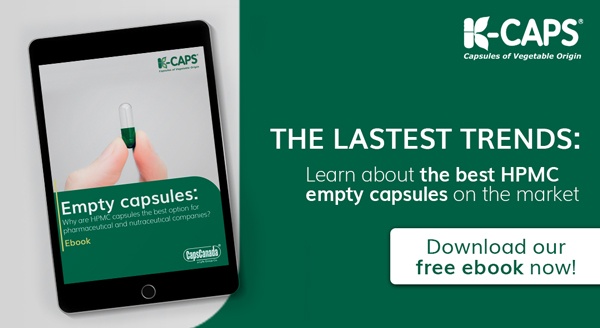
Regulations regarding "natural" claims vary by country,making it crucial for dietary supplement brands to approach the use of natural colorants with care. As health-conscious consumers increasingly seek products with "clean labels," brands may be tempted to include natural colorants as part of these claims. However, it's important to choose these colorants wisely.
The challenge lies in the fact that there's no universal definition of a "natural colorant." What one country’s regulatory agency deems “natural” may not align with another's standards. Therefore, brands should request a complete ingredient and source list from their capsule manufacturers for each colorant being considered, ensuring compliance with the pharmacopeias of the countries where the product will be sold. While some capsule manufacturers offer this research as part of their technical assistance, others may not.
Additionally, not all capsule manufacturers can provide natural colorants. Many natural colorants are challenging to work with in capsule production, and even those that are suitable require more expertise than synthetic options. While leading manufacturers with advanced R&D capabilities can successfully bring HPMC capsules with natural colorants to market, others may struggle to do so.



